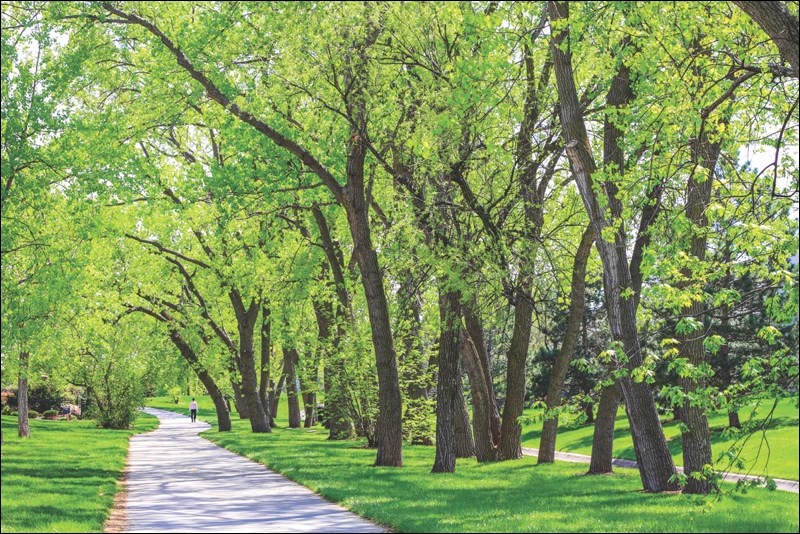In the last few years, the City of North Battleford implemented a community safety initiative in an effort to reduce crime and change the perception of the city’s reputation of having a higher crime rate per capita than a lot of other cities and towns in the country. I always thought it would be good to know exactly how these statistics were compiled and what measurement tools are used. Most of the people I’ve met since I moved here in 1990, have not been a victim of crime of any kind. Maybe the measuring tools used don't actually truly measure the reality. Like they say, “43.6 per cent of all statistics are made up on the spot.” I think the community may be a victim of statistics as opposed to actuality. I have thought that ever since the first time the city received the unfortunate designation. I’m not saying we shouldn’t look for ways to reduce crime, I’m just saying the city doesn’t deserve the designation or reputation.
One of the safety programs that has been introduced is one called CPTED or Crime Prevention Through Environmental Design. Crime prevention through environmental design has been around for more than 40 years. The basic idea is the planning and design of communities has a significant impact on the opportunity for crime to occur and the fear of crime to occur.
The early work was called first generation CPTED and it was characterized by attempts to get people in communities to take formal or informal ownership of the places where they work, live and play. CPTED called this territoriality. Territoriality includes providing good sightlines and night time lighting, clearly defined entranceways and exits to properties and parks and improved maintenance of places that let all people know the places are cared for consistently and frequently. A second generation of CPTED came about in the 1990s and expanded the emphasis from just physical places and crime opportunity, into the neighbourhood social conditions that create some of the motives for people to commit crimes.
A huge part of implementing any aspect of a CPTED program is conducting a risk assessment. A crime risk assessment helps to determine which crime-prevention strategies make sense and which do not apply in a particular development situation. Another way of saying this is, the same strategies are not required to be implemented everywhere in a community if the assessment evidence indicates no risk exists. An example of this would be the Territorial walking trail.
The City started building this trail back in the 1990s in and amongst the trees in what used to be called the buffer strip. In the 25 years I worked there, I can recall only one incident of crime on the trail and none after Public Works installed lighting on Territorial Drive that also lit up the trail. This may have changed over time, I don’t know.
Another aspect of CPTED is the importance of choosing and maintaining the appropriate trees and shrubs in various locations and neighbourhoods. The guiding principle is the planting of low growing shrubs but trees with high canopies, particularly in areas where passive surveillance and sightlines, are important to have. It’s extremely important to realize that in areas where visibility and screening are not an issue, more varieties and species could be used and the implementation of CPTED pruning recommendations can, at the very least, be softened and in some cases eliminated all together. Shrubs maintained at less than one metre high and the raising of the skirts (removal of lower limbs) on all trees to more than two metres up the trunk is not necessary in every situation or location.
The trees and shrubs almost exclusively get blamed for the interruption of sight lines, but this thinking is somewhat flawed in that they are but one contributing factor to this. Parked cars on streets and in parking lots, solid fences built to property lines and walls of buildings built to property lines, that you can’t see around, contribute to the interruption of sight lines in a big way as well. You can’t do much about those things but removing and excessively pruning the landscape will show the community that you’re getting ’r done.
Many urban foresters, in cities across the country, have tried to convince their administration, municipal politicians and city planners to relax the CPTED pruning guidelines in favour of the more modern psychology that claims, well-treed and landscaped communities have lower crime rates than the ones that are not well-treed. This is attributed to the calming effect trees and forests provide for people. People like trees. Check out “Trees Shed Bad Rap as Accessories to Crime” from the Yale School of Forestry or “Want to fight crime in the city, plant a tree” at the Mother Nature Network or just google: city trees reduce crime rates and see what the research says. You don’t have to take it from this self proclaimed tree hugger.
“Mister.” He said with a sawdusty sneeze, “I am the Lorax, I speak for the trees”
— Dr. Seuss



